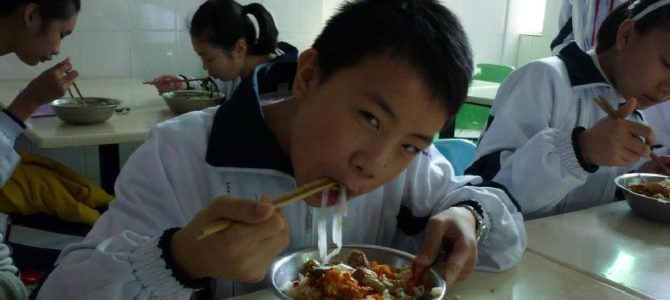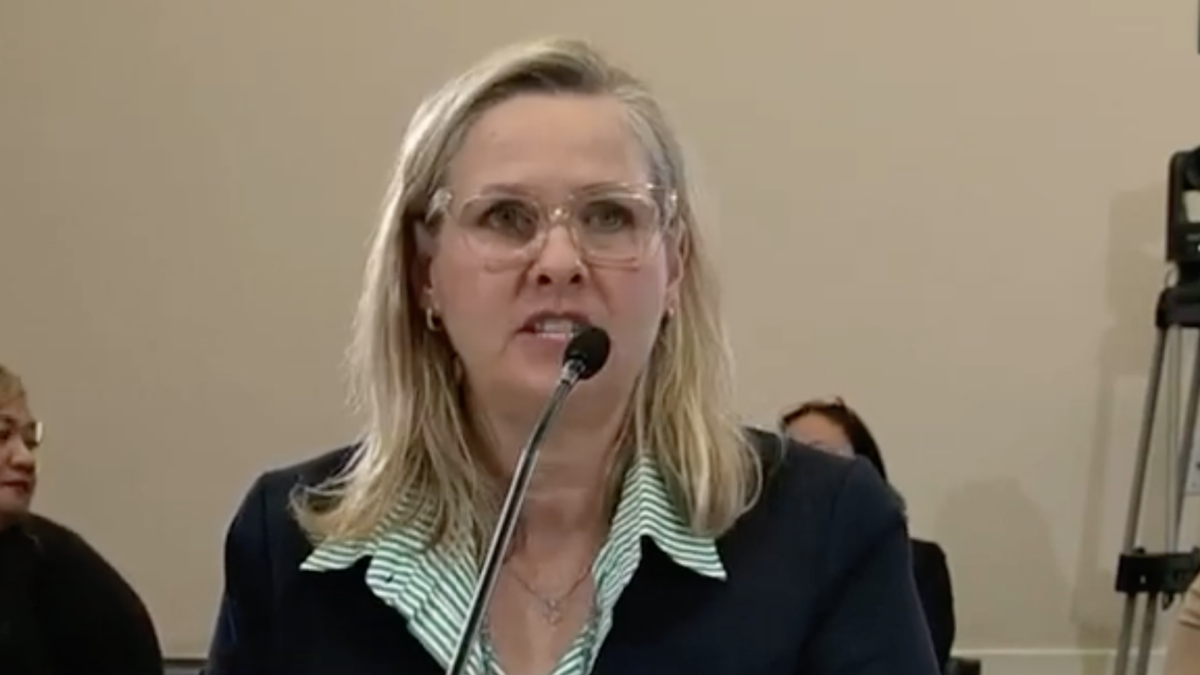
We Americans have tried many things to improve U.S. education outcomes, including out-spending many nations. Yet, according to the Programme for International Student Assessment (PISA), which ranks global education systems by assessing 15-year-old students’ reading, mathematics, and science literacy every three years, American students end up in the middle of the pack with little improvement year after year.
Students from East Asia, such as Singapore, mainland China, Taiwan, and Hong Kong dominate the top 10 in all three subjects, especially on math and science (there’s an ongoing debate whether the PISA result is rigged). Since the East Asia region is dominated by people with Chinese-style education systems, does this mean Chinese schools are superior to American schools?
Some people think so. Since Amy Chua published her book “Battle Hymn of the Tiger Mother,” many Americans look to Chinese culture for answers to save American education. Lenora Chu, an American who lived in China with two children, took it a step further. In her recent book and an accompanying essay that appeared recently in The Wall Street Journal, she argues that what American students need are Chinese schools.
Here’s What Chinese Schools Have Done Well
When I went through the K-12 education system in China, teachers always expected each one of us to give our best effort. They never talked about learning being fun. Instead, they emphasized the merit of hard work. Thus, they do not dumb down the content to ensure that kids at the bottom of the class understand. Instead, they did everything they could to ensure the content was challenging even for the best in the class. They instill the belief in every student that anyone who works hard and devotes enough time will eventually get it.
Chinese teachers set high expectations for their students partly because a teacher’s compensation is closely tied to his or her students’ academic performance. While in America teachers’ unions have repeatedly repelled or undermined efforts to implement performance-based compensation for teachers, Chinese teachers accept such a compensation structure as a no-brainer. Good Chinese teachers receive handsome performance bonuses and special allowances. They are also highly sought-after by private tutoring companies, which offer to double or triple teachers’ incomes outside their regular school hours.
Chinese parents also set high expectations for students. My parents made their high expectations known beginning my first day of school. I was expected to excel in all my subjects (although they gave me a pass on physical education), and failure was never an option. When I brought any test result home, my father always asked if I was the first in the class and if I had scored 100 percent. If I wasn’t either, he would ask me if I had learned from my mistakes and make me promise that I wouldn’t repeat them.
In Chinese schools, teachers enjoy a great deal of respect, and parents and teachers usually work as a team with a laser focus on a student’s academic performance. Teachers use frequent tests to identify students’ strength and weakness in each subject. Parents are asked to sign off on each test result to acknowledge that they understand what their children need to work on.
If a student didn’t do well, his or her parents rarely blamed the teachers. Instead, both the student and his or her parents felt shamed and often blamed themselves. When it was time for parents and teachers to meet, every student’s name and overall class ranking was posted on the blackboard for everyone to see. Parents of the children who ranked in the top would take the front-row seats, while parents of the children who ranked in the bottom would try to hide in the back. My parents never said it out loud, but I knew that they expected to always sit in the front row.
The Dark Side-Effects of Chinese Schools
Chinese schools are highly competitive. Students do not automatically move from one grade to the next. Those who fail the end-of-term exams are left behind. The competitive pressure particularly ratchets up at the end of junior high. Those who wish to go to a high school have to pass an admission exam. Thus, only about 70 percent of students who finish middle school go on to high school.
Unlike American high schools, Chinese high-school freshmen don’t get to choose which classes they take. Students are grouped into classes based on the results from the admission exam. Those who scored high are grouped into an “advanced” class, where they are assigned the best teachers and most challenging material that aims to best prepare these students for the college entrance exam. Those who scored low are grouped into a “slower” class and get the worst teachers. No one expects these students to do well. They’re a disgrace to their families because they have no chance for college and their best hope is a high school diploma. In a cruel way, these young people’s entire future is determined by one exam.
Since less than 30 percent of high-school graduates get into college, even those students in the advanced class have to study hard. P.E. and art classes are dropped at tenth grade since they are considered “useless” for the college exam. A typical school day for Chinese high school students runs from 7 a.m. to 10 p.m. In addition to regular classes from Monday to Friday, many schools require students to show up for school on Saturday.
Lacking enough sleep is a common complaint among Chinese high school students. When I look back at my high school experience, I spent all my waking hours studying. I never went to a dance or learned a musical instrument. Compared to American high school students, I sometimes feel my youth was robbed and I never really lived during that period.
Such high pressure on young people has many dark side effects. Sometimes parents and students resort to bribery or even cheating in order to get into a good school. The willingness to do anything, including cheating, to get into a good school, has spread beyond China. Reports show students from mainland China are more likely to cheat than other international students. There’s a booming cottage industry inside and outside China for students to hire imposters to take SATs, Test of English as a Foreign Language, and other tests in order to get into U.S. universities. While I believe most mainland Chinese students are hard-working and honest, the academic cheating among a small segment of them is an undeniable and worrisome trend.
Another dark side of Chinese schools is the political indoctrination of Chinese youth. Chinese schools serve a political purpose: to churn out the kind of citizens that the Chinese government wants. Students start learning about Communist ideology as early as first grade.
All school children between the ages of six and 14 are expected (really compelled) to join an organization called the Young Pioneers of China (YPC). In its charter document, YPC says it “teaches Chinese children about communism. It exists to build a communist reserve for the future.” Membership in YPC is not an easy process. A student usually has to prove he or she is worthy for such a noble cause.
YPC usually holds its new-member ceremony at a revolutionary martyr’s burial ground. The YPC has a special salute, which symbolizes that the interests of the party supersede all individual needs. Part of the oath new YPC members have to take includes, “I promise that I love the Communist Party of China, the mother land, and the people; I will study well and keep myself fit and prepare for contributing my effort to the cause of communism.” There you have it: the goal of Chinese schools is to churn out obedient heirs to Communism.
Do American Students Need Chinese Schools?
Education in America is “resource rich and culture poor.” There are definitely things we should learn from Chinese schools, such as setting high expectations for students, extending school days, and implementing performance-based compensation for teachers.
Currently, too many excuses are baked into the U.S. education system. For example, if you do poorly in school, your parents are likely to blame your teacher, while your teacher is likely to blame your social and economic circumstances (especially if you’re a minority), or budget cuts. Seldom are American parents and teachers willing to discuss what you as a student should do differently or better. And unless you’re Asian, no one expects children to be good at math. However, track records from privately managed schools such as Success Academy show that all American students, including those with disadvantaged backgrounds, can and will excel in subjects like math when there are discipline and high expectations from both teachers and parents.
Therefore, we don’t need a replica of Chinese schools in America because our education goal is not to churn out obedient heirs to communism, and our education outcomes shouldn’t be measured by test scores alone. American schools do many things better than Chinese schools do. American students are allowed to be kids and to have fun. They can choose what they want to learn. They are encouraged to be who they are, be creative, challenge authority, and develop original thinking (at least historically).
Just when some Americans look to Chinese schools for answers, more and more Chinese “tiger” parents recognize the shortcomings of Chinese schools and are opting their children out. Not surprisingly, the total number of Chinese students enrolled in American high schools rose by 48 percent between 2013 and 2016.
American schools and Chinese schools represent two very different education systems. Maybe the solution for parents and students from both countries is a happy medium.









